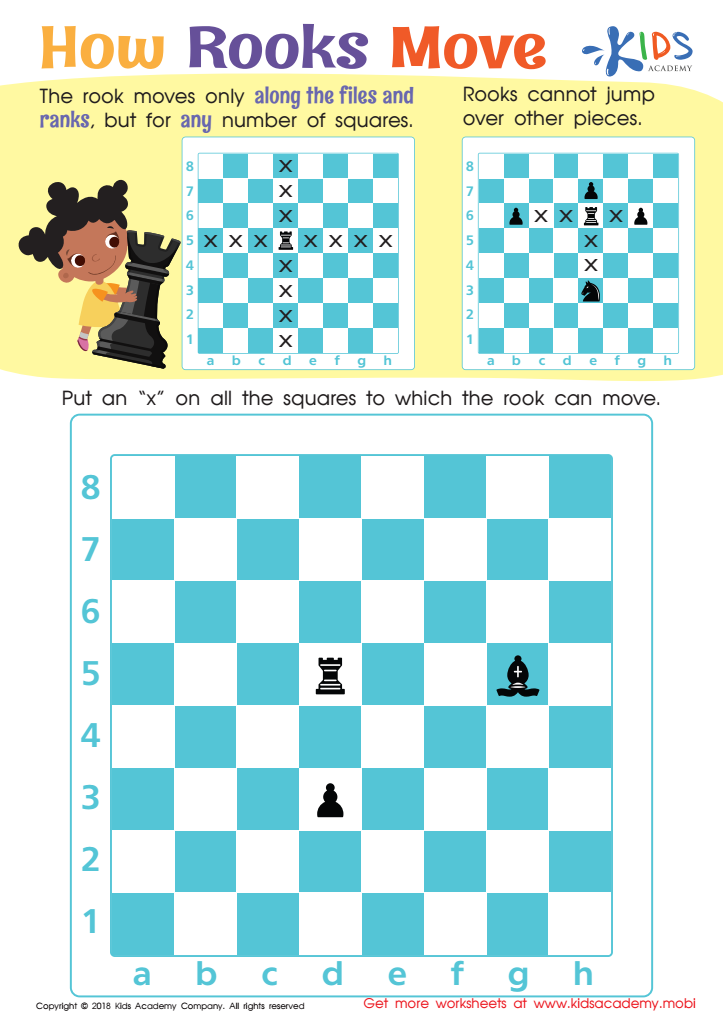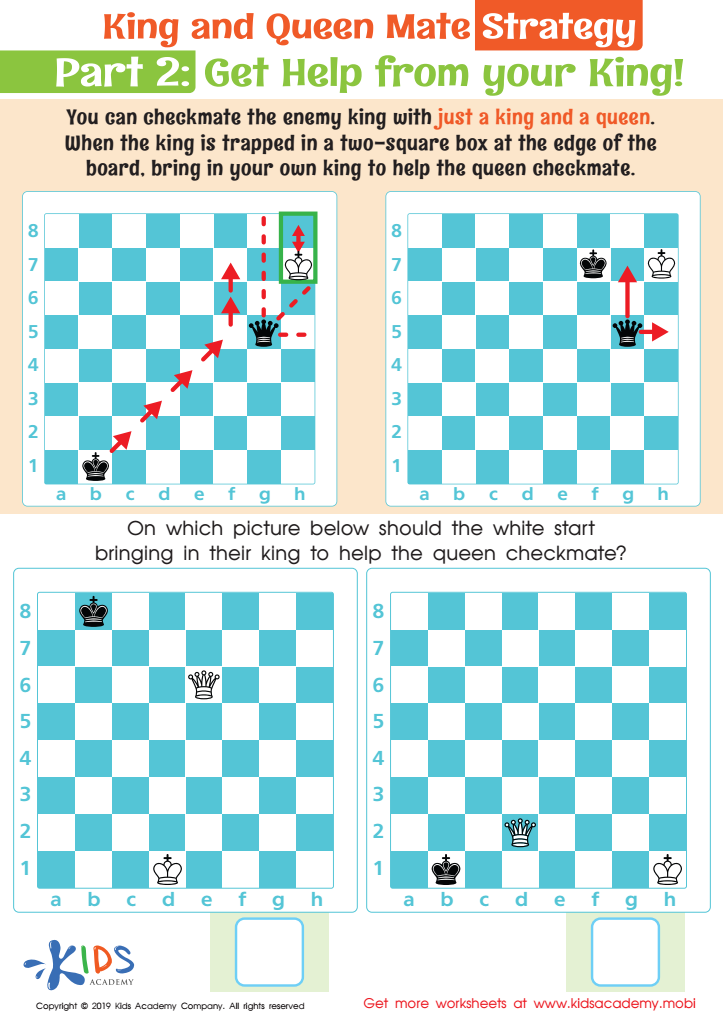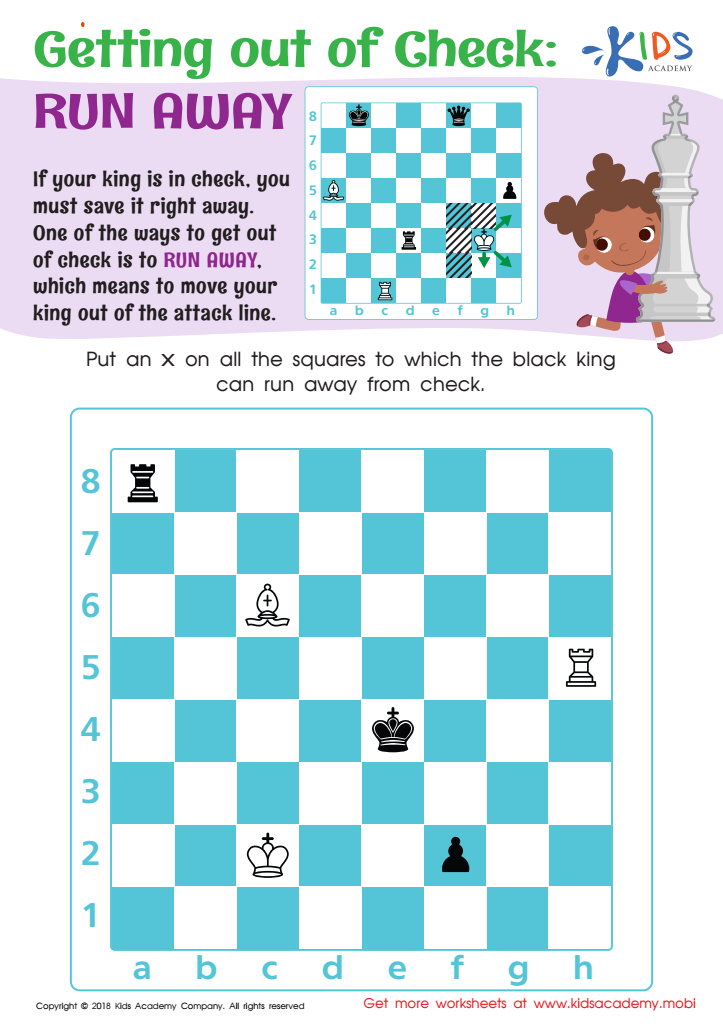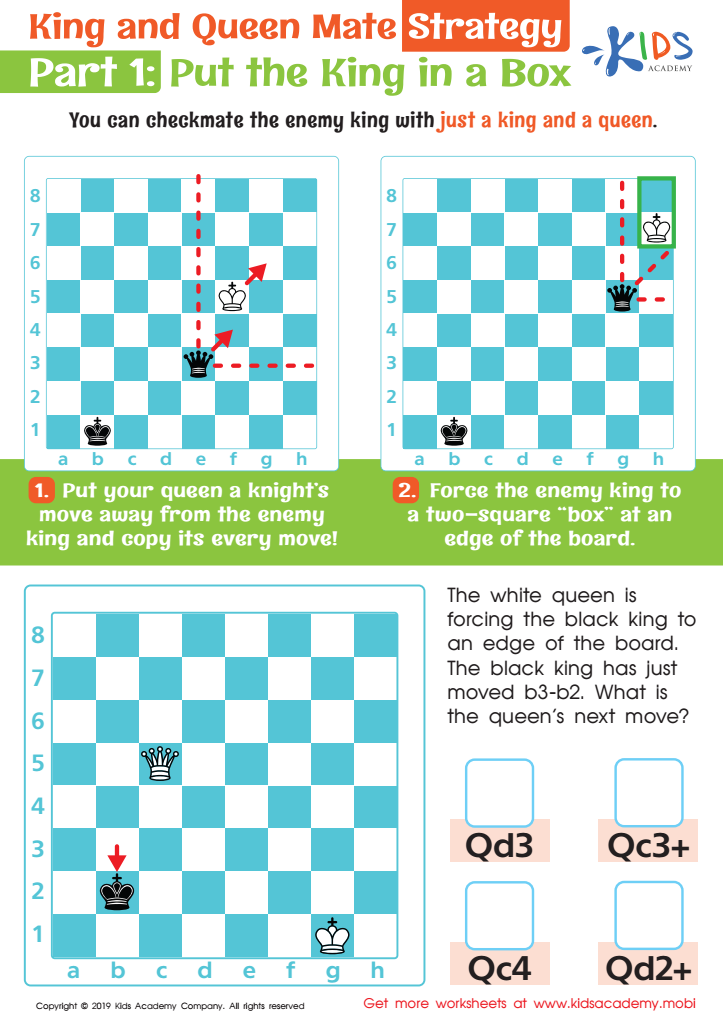Chess Worksheets for Ages 7-9
86 filtered results
-
From - To
Welcome to our Chess Worksheets for Ages 7-9! Designed to make learning chess fun and engaging, our comprehensive collection of worksheets helps young learners master the fundamentals of the game. Each worksheet features captivating illustrations and step-by-step instructions, making complex concepts easy to understand. Activities include identifying pieces, practicing moves, and solving chess challenges to improve strategic thinking. Ideal for both classroom and home use, our resources enhance critical thinking skills while encouraging social interaction and sportsmanship. Start your child's chess journey today with our expertly crafted worksheets that promote educational growth through play! Explore and download our printable resources now!


Chess Pieces Quest Worksheet


Notation of Moves Writing it Down Worksheet


King and Queen Worksheet


Direct Check: Puzzle 2 Worksheet


Beware of the King! Worksheet


Changing Power of Chess Pieces Worksheet


Promoting a Pawn Worksheet


Set-up Quest Worksheet


How King Moves Worksheet


Short Notation Quest Worksheet


How Rooks Move Worksheet


King and Queen Mate Strategy: Part 2 Worksheet


Getting out of Check: Run Away Worksheet


Direct Check: Puzzle 3 Worksheet


How Knights Move Worksheet


Setting up the Chessboard: Part 2 Worksheet


Check Bingo Worksheet


Short Notation of Captures Worksheet


Castling Mash–up Worksheet


Direct Check: Puzzle 4 Worksheet


King and Queen Mate Strategy: Part 1 Worksheet


Knights Bingo Worksheet


Which King is in Check? Worksheet


One Move Checkmates: Puzzle 1 Worksheet
Chess is an invaluable educational tool for children aged 7-9, offering numerous cognitive, social, and emotional benefits. Engaging in chess helps enhance critical thinking and problem-solving skills, as players must evaluate multiple moves and consider consequences. This fosters strategic planning and the ability to anticipate an opponent's actions, skills that are transferable to academic situations.
Moreover, chess promotes patience and perseverance. Children learn to take their time to analyze positions and formulate strategies, which can translate to improved focus and concentration in the classroom. This level of engagement also encourages a growth mindset, where failures on the chessboard serve as learning experiences, teaching resilience.
Additionally, chess is an excellent way for children to develop social skills. Whether playing competitively or casually, kids learn sportsmanship, teamwork, and respect for others—values that are essential for collaboration and community-building.
For parents and teachers alike, fostering an interest in chess is an investment in children’s cognitive development and socio-emotional growth. By encouraging participation in chess, adults can help children build a solid foundation for future learning and personal growth, creating a fun and intellectually stimulating environment where they can thrive.
 Assign to My Students
Assign to My Students















